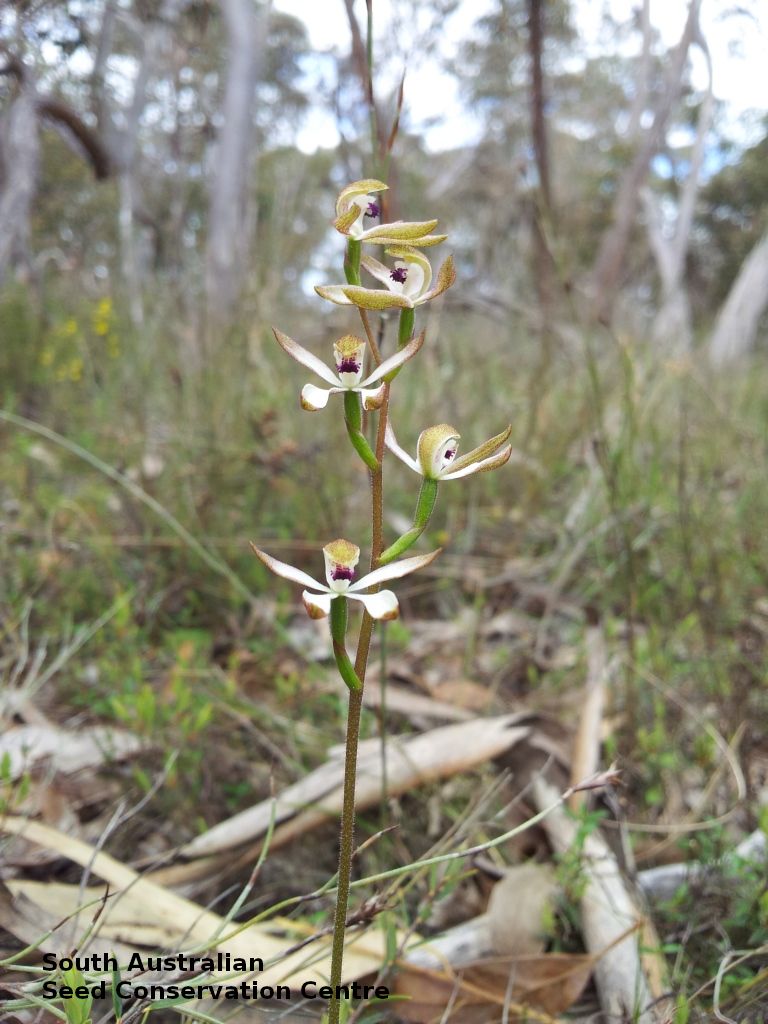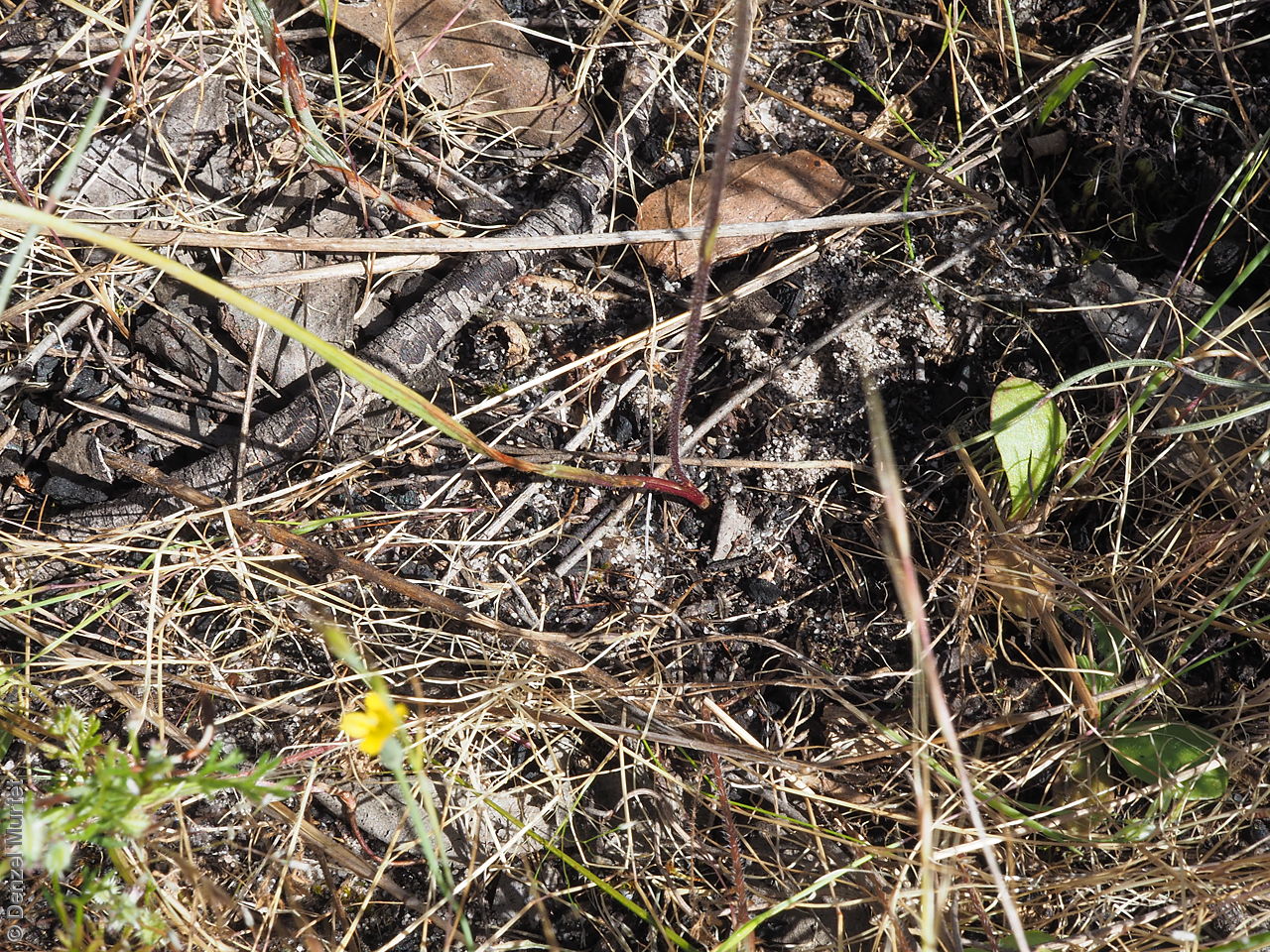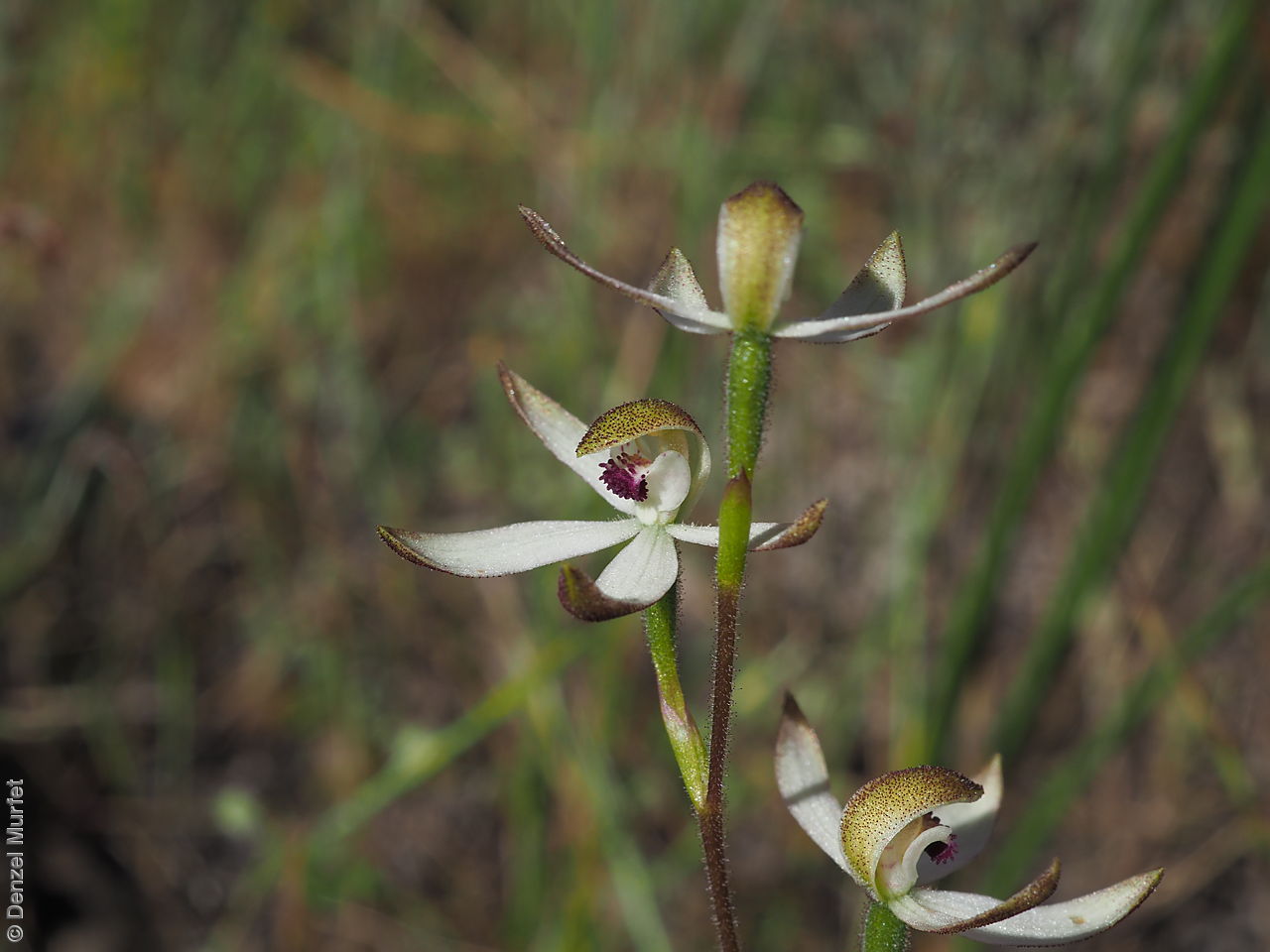














Botanical art
Prior names
Stegostyla cucullata
Etymology
Caladenia from the Greek 'callos' meaning beauty and 'aden' meaning a gland, referring to the colourful labellum and the glistening glands at the base of the column that adorn many of the species. Cucullata from Latin 'cucullus' meaning cap or hood.
Distribution and status
Found only in a small area in South Australia between Bordertown and Naracoorte, growing in deep sand under Eucalyptus baxteri. Also found in New South Wales, Victoria and Tasmania. Native. Rare in South Australia. Common in the other States.
Herbarium region: South Eastern
NRM region: South East
AVH map: SA distribution map (external link)
Plant description
A slender terrestrial orchid growing from an underground tuber to 25 cm high with up to 6 small flowers borne on wiry stems. The single basal leaf is linear, to 25 cm long and sparsely hairy. Flowers are 10-35 mm in diameter. Sepals are 15 mm long with a white interior and green to brown exterior covered with glandular hairs, the white labellum has a red to purple mid-lobe. Flowering between September and November. Fruits are brown, papery ellipsoid capsule. Seeds are very small brown ellipsoid seed with a long cylindrical translucent brown mesh-like covering.
Seed collection and propagation
Collect seeds between October and November. Collect fat capsules as they start to dry and turn brown. Pods will split and release the seeds quickly and will require monitoring. To increase the chances of collecting mature pods, it is recommended that a small breathable bag (ie. Organza bags) be used to enclose the developing capsules. Place the capsules in a container that will hold fine seeds and leave to dry for a few weeks or until the capsule split. Then carefully hold the capsule and tap it gently to release the seeds. Store the seeds with a desiccant such as dried silica beads or dry rice, in an air tight container in a cool and dry place, refrigerator or in liquid nitrogen. For the NVC South East Orchid Project a total of six populations consisting of more than 1000 individuals in total were recorded in the Bangham, Geegeela & Binnum areas. A total of 6,200,000 seeds (0.91 g) were banked for these six observed populations. Seed viability ranged from 50% to 75%. Seed germination in Caladenia species is difficult without compatible mycorrhizal fungi.
| Location | No. of seeds (weight grams) | Number of plants | Date collected | Collection number Collection location | Date stored | % Viability | Storage temperature |
|---|---|---|---|---|---|---|---|
| BGA | 610,000 (0.09 g) | 30+ | 2-Oct-2013 | KHB779 South Eastern | 1-Nov-2016 | 64% | -80°C |
| BGA | 530,000 (0.077 g) | 25+ | 13-Oct-2013 | KHB794 South Eastern | 1-Nov-2016 | 50% | -80°C |
| BGA | 1,000,000 (0.145 g) | 10+ | 12-Oct-2013 | KHB780 South Eastern | 1-Nov-2016 | 71% | -80°C |
| BGA | 850,000 (0.123 g) | 20+ | 11-Oct-2013 | KHB772 South Eastern | 1-Nov-2016 | 75% | -80°C |
| BGA | 2,140,000 (0.312 g) | 25+ | 18-Nov-2013 | DJD2262 South Eastern | 1-Nov-2016 | 61% | -80°C |
| BGA | 1,170,000 (0.171 g) | 20+ | C. Dickson South Eastern | 1-Nov-2016 | 59% | -80°C |
Number of plants: This is the number of plants from which the seeds were collected.
Collection location: The Herbarium of South Australia's region name.
% Viability: Percentage of filled healthy seeds determined by a cut test or x-ray.